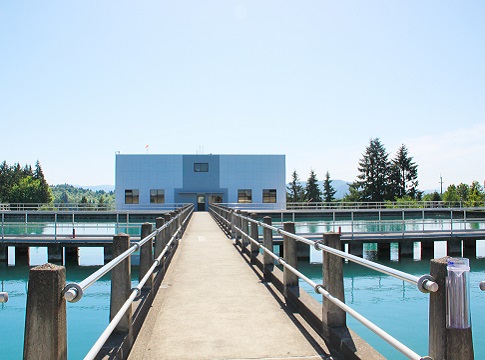Related News
Related News
-
EWEB Sets 2026 Budget and Rates, Advances Evaluation of McKenzie Valley Service Territory Realignment
Taken together, the 2026 budget and rate adjustments and the territory-realignment evaluation reflect EWEB’s dedication to responsible financial stewardship, modern, resilient utility infrastructure, and thoughtful planning for the future.
Find Out More -
Let's Talk Turkey. Is your family ready for winter?
We're heading into the holidays, but that also means snow, ice, and not-so-nice weather might be in the forecast. Here are some tips to prepare in advance.
Find Out More -
EWEB Hosts Annual Spill Drill to Protect McKenzie River
EWEB led emergency responders in its annual “spill drill” on the McKenzie River on Wednesday, Oct. 15, at the Trail Bridge Campground.
Find Out More -
A day in the life: Monitoring water quality throughout the McKenzie Watershed
Follow Senior Environmental Specialist David Donahue as he collects water quality samples from throughout the watershed as part of EWEB's early warning system for threats to Eugene's drinking water.
Find Out More -
EWEB Partners with Eugene School District 4J to Celebrate New Kennedy Middle School Emergency Water Station Site
Hundreds of attendees practiced filling up water containers at Saturday's demonstration event.
Find Out More -
Electric Projects underway in North & South Eugene
Underground lines and disaster-resilient power poles are part of EWEB’s infrastructure upgrade near Eugene’s largest natural resource area.
Find Out More -
Quartz Creek: Setting the Stage for Floodplain Restoration
The project resets the floodplain along 1.8 miles of a formerly channelized creek to improve water quality, fish habitat and natural disaster resiliency.
Find Out More -
Pure Water Partners: 5 Years of Regeneration
As EWEB and the Pure Water Partners observe the fifth anniversary of the Holiday Farm Fire, we celebrate major milestones in the watershed's recovery and check back in with PWP landowners who still have a lot of work ahead as they continue to rebuild their lives.
Find Out More -
Join the Pledge to Prepare
When you think about getting ready for an emergency, you probably have questions. You aren't alone. Preparing for emergencies can be overwhelming, which is why EWEB has put together a 12-month program to help you and your family get two weeks ready.
Find Out More -
You can’t predict the next disaster, but you can prepare
The earthquake lasted less than a minute. But now the power’s out. The tap runs dry. Cell service is spotty. Would you be ready?
Find Out More -
EWEB Celebrates Operators on the 75th Anniversary of the Hayden Bridge Filtration Plant
Learn more about the Water Treatment Plant Operators who have kept the Hayden Bridge Filtration Plant running for the last 75 years.
Find Out More -
NASA partners with EWEB to assess wildfire impacts to drinking water
NASA's Earth Information Center shares a new video detailing how EWEB's Drinking Water Source Protection work is advising new research tools
Find Out More -
EWEB prepares for wildfire season with risk mitigation measures
EWEB is building a more resilient electric system to weather various types of disasters, from wildfire to winter storms.
Find Out More -
EWEB environmental specialist wins prestigious awards for publication
Article recounting EWEB’s efforts to protect the McKenzie River after Holiday Farm Fire earns national recognition
Find Out More -
Last Call for EWEB/Lane County Septic Grants
Holiday Farm Fire recovery program now eligible for businesses, residential property owners who purchased post-fire, to cover inspection costs and new construction
Find Out More - Show More
EWEB Water Filtration Plant is Ready for the Rain
September 17, 2020

With rain in the forecast, we wanted to update our customers about the capabilities of our Hayden Bridge Filtration plant when it comes to treating water from the McKenzie River amid the impacts of the Holiday Farm Fire.
Depending on the amount of rain, we can expect higher levels of turbidity (suspended particles including soil) and an increase in organic material coming from the burned and eroded landscape around and above the river.
The rain forecast for Sept. 17-19 along with the expected turbidity, stormwater runoff and organic carbon impacts, is well within the filtration plant's capability and capacity to handle.
The organic material is made up of ash and particles from burned vegetation and soil. Some portion of the organic material also dissolves into the river water and is called dissolved organic carbon. Our Hayden Bridge Filtration Plant treats and filters organic material, including dissolved organic carbon, using the powdered active carbon (PAC) and rapid sand filtration systems.
The PAC system works by adsorbing (attracting like a magnet) these organic material compounds to the carbon molecules. Once adsorbed to the PAC, the compounds are removed by the filtration process. Due to the increased organic material in the river, staff are having to wash and clean the filters more often in order to continue producing high quality drinking water.
We have two different types of instruments in the watershed and at the Hayden Bridge intake to monitor dissolved carbon levels in real time. This provides an early warning system to allow operators to prepare for and adjust treatment strategies prior to the river water entering the filtration plant.
In addition to using more PAC and cleaning the filters more often, staff are also adjusting the overall treatment process on an ongoing basis. We continue to monitor both the source water and treated drinking water to ensure its safety. Public health is our top priority as we strive to meet the expectations for reliable service to our community's homes and businesses.

